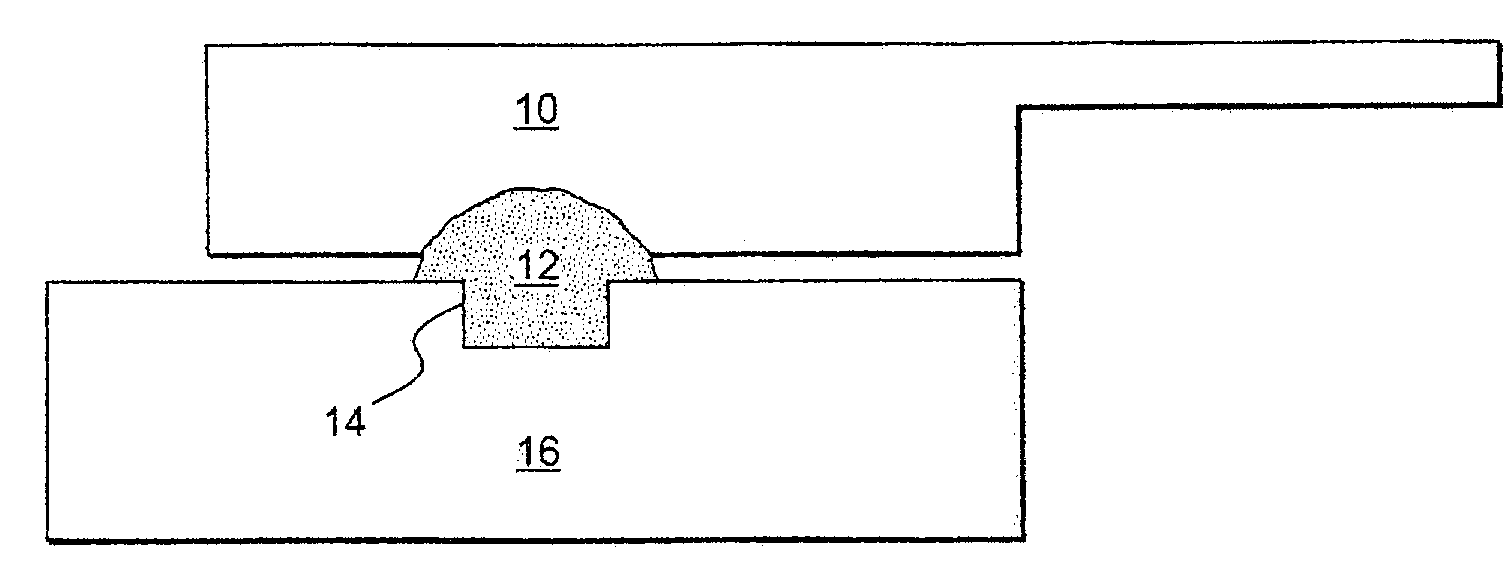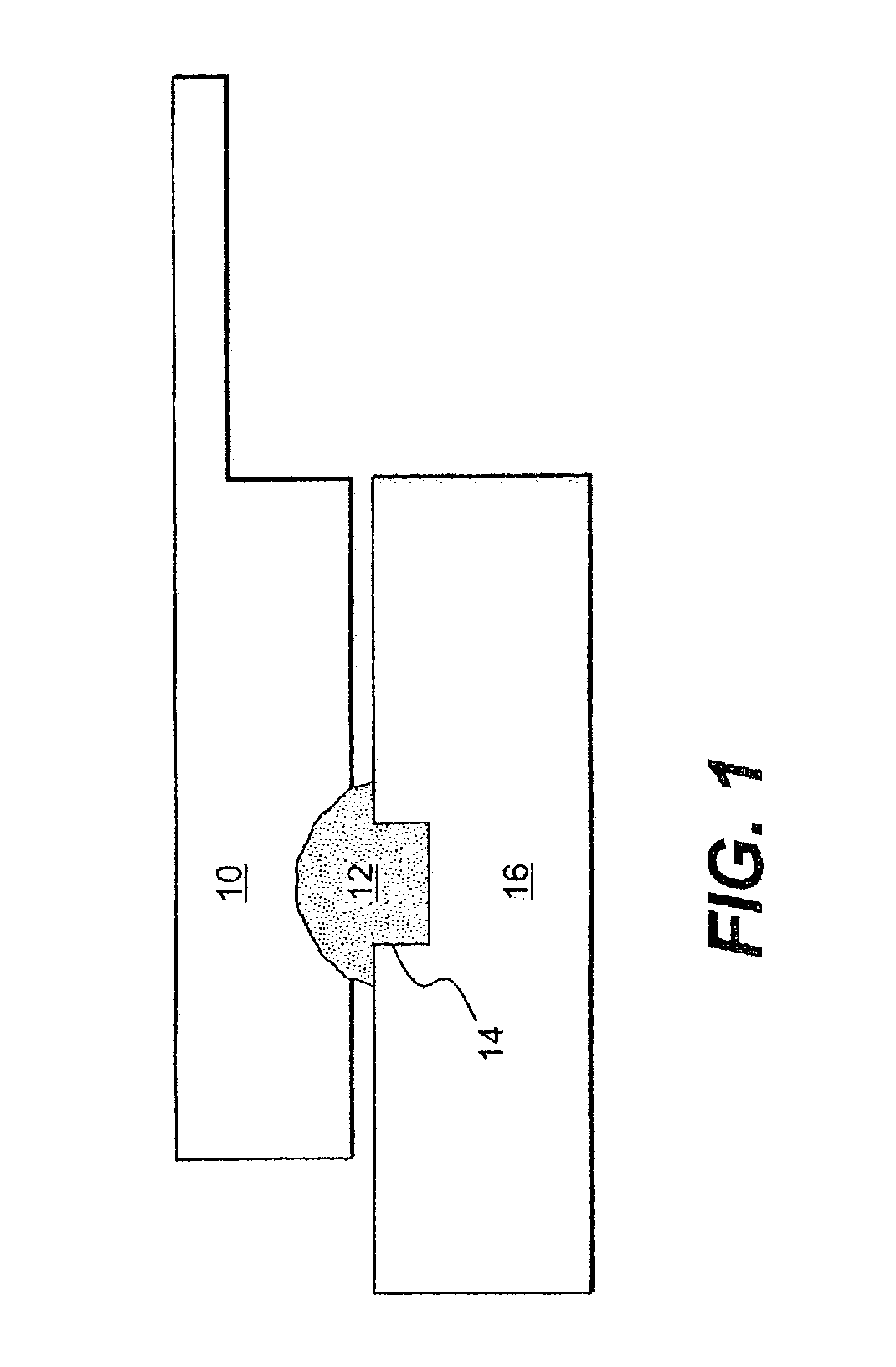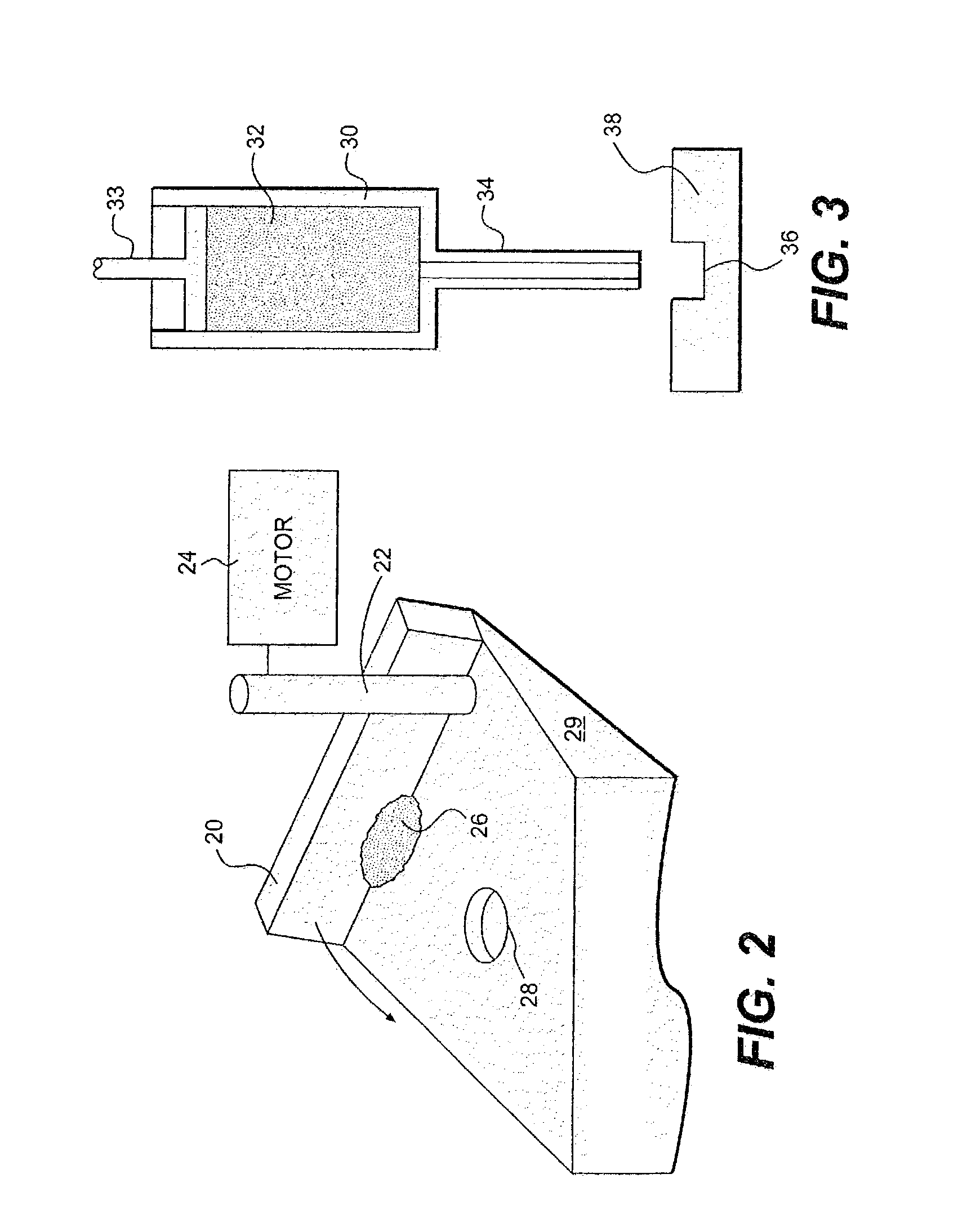Methods for making and using high explosive fills for very small volume applications
- Summary
- Abstract
- Description
- Claims
- Application Information
AI Technical Summary
Benefits of technology
Problems solved by technology
Method used
Image
Examples
example 1
[0044]A small amount of a CL-20 slurry, prepared as described above, was taken up on a PTFE spatula and wiped over a loading hole in a fixture of an explosive device (as in FIG. 1). The mobile phase was allowed to dry. A loading hole in a second fixture was loaded with lead azide. Upon drying of the slurry mobile phase, an electrical resistance bridgewire was placed in direct contact with the lead azide and connected to the terminals of a battery. The CL-20 energetic material was successfully functioned.
example 2
[0045]A fixture was provided comprising a plate (made of PMMA or aluminum) having a hole drilled through the plate and a trough inscribed on the plate surface so as to be in communication with the hole. CL-20 was incorporated in a slurry with ethanol, and loaded into the hole in the plate with a small volume of the slurry placed in the trough. In addition, lead styphnate was placed in the trough in direct contact with the CL-20 and so as to partially fill the trough. Lead azide was then placed in the trough to fill the remaining trough volume. An electrical resistance bridgewire was placed in direct contact with the lead azide and the bridgewire was connected to the terminals of a battery. The device was successfully functioned and, in this regard, the primary explosives, lead styphnate and lead azide, set off the CL-20 fill material, which carried out a 90° corner turn and made a dent in a lead witness plate disposed in the end of the explosive train. In a closely related example, ...
example 3
[0046]A fixture plate made of PMMA or aluminum having a hole drilled through the plate thickness was provided and the hole was loaded as in Example 1. The device was successfully functioned using a low voltage electric bridgewire, with lead azide being used as the primary initiating explosive.
PUM
 Login to View More
Login to View More Abstract
Description
Claims
Application Information
 Login to View More
Login to View More - R&D
- Intellectual Property
- Life Sciences
- Materials
- Tech Scout
- Unparalleled Data Quality
- Higher Quality Content
- 60% Fewer Hallucinations
Browse by: Latest US Patents, China's latest patents, Technical Efficacy Thesaurus, Application Domain, Technology Topic, Popular Technical Reports.
© 2025 PatSnap. All rights reserved.Legal|Privacy policy|Modern Slavery Act Transparency Statement|Sitemap|About US| Contact US: help@patsnap.com



